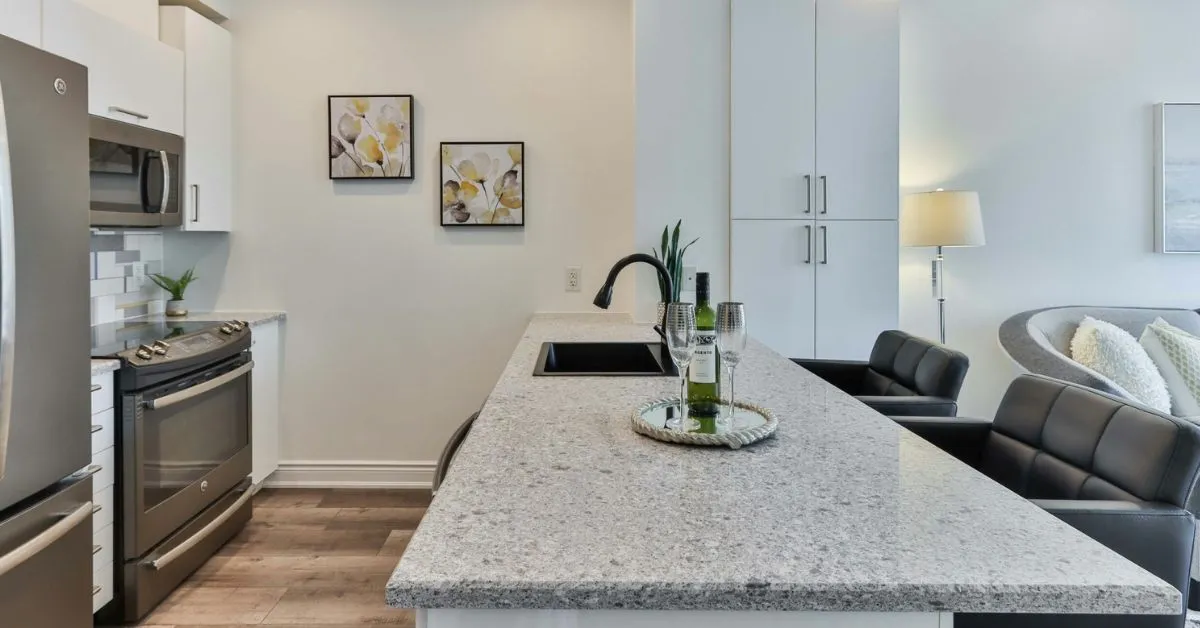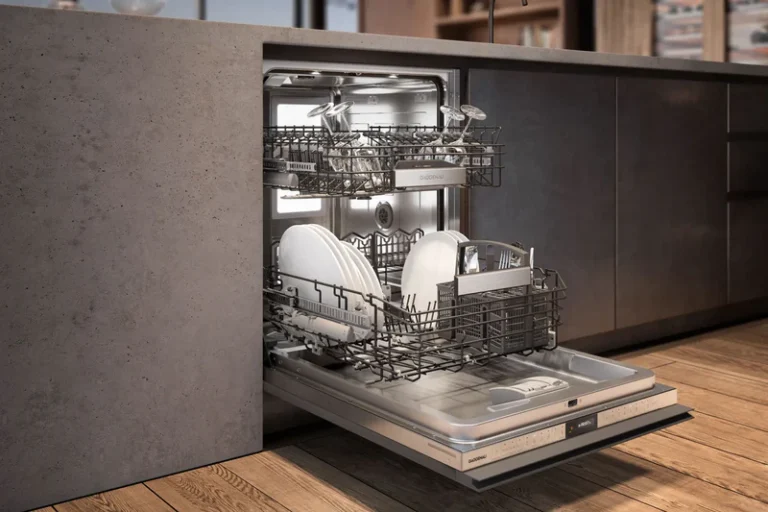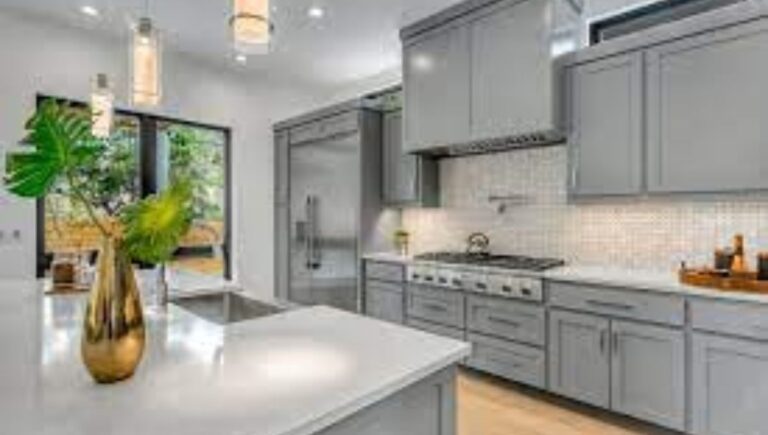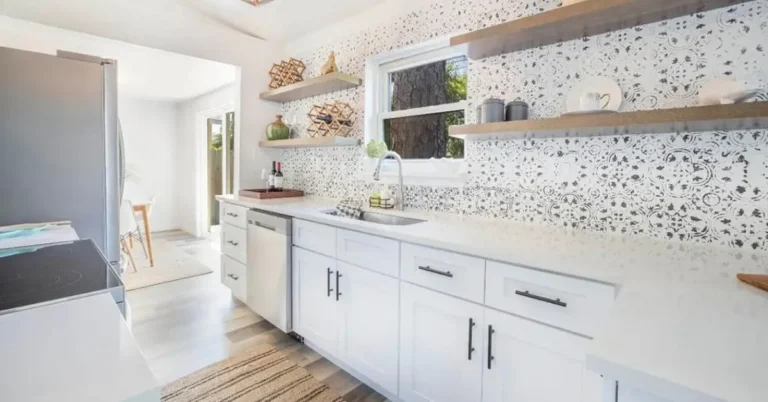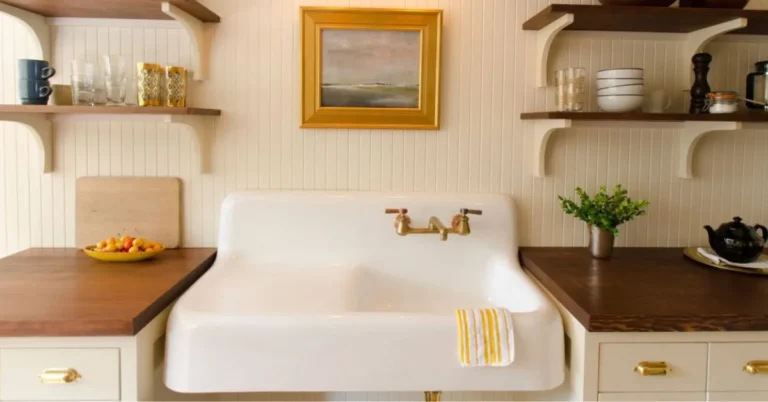Leathered Granite Countertops Elevate Your Kitchen with Style and Durability
In the past few years, leathered granite countertops have become more and more popular. They offer homes a unique mix of style, durability, and flexibility for their kitchens. Traditional polished granite surfaces have a smooth and shiny finish. Leathered granite countertops, on the other hand, go through a special finishing process that gives them a unique roughness that looks like leather. This difference in texture gives the stone character and depth, making it a feature that will stand out in any kitchen design.
What is Leathered Granite?
A natural stone countertop called leathered granite goes through a special finishing process that gives it its unique look and feel. The granite slab’s surface is made rougher through mechanical grinding. The stone’s natural color and texture are then improved with chemical treatments. As a result, the surface is matte and a little rough, with small differences in tone and texture that make each slab special.
Advantages of Leathered Granite Countertops
- Enhanced Aesthetic Appeal
Fashionable leathered granite countertops are very attractive, which is one of their main benefits. Leathered granite’s unique texture and look give any kitchen more depth and dimension, making a focus point that draws the eye and makes people want to admire it. Leathered granite has a softer sheen that goes with both classic and modern kitchen designs. This is different from polished granite, which shines and reflects light.
- Durability and Longevity
Along with its beautiful look, leathered granite is known for being strong and lasting a long time. Leathered granite countertops are made from natural stone and are very resistant to heat, scratches, and stains. This makes them a great choice for places like the kitchen that get a lot of use. Sealing and taking care of leathered granite countertops the right way will help them last for years and keep their beauty.
- Unique Texture and Feel
The unique texture and feel of leathered granite counters is one thing that makes them stand out. When you run your hand over the surface of a leathered granite countertop, you can feel its unique texture. This adds warmth and class to the kitchen. The natural differences in the stone’s surface make the countertops more interesting to look at and make each one unique. This makes the room look better overall.
Disadvantages of Leathered Granite Countertops
- Porosity and Staining Potential
Even though they last longer, leathered granite countertops are more porous than polished ones, which means they can get stained if they aren’t protected properly. Leathered granite’s rough surface can trap liquids and dirt, which makes it more likely to stain and change color over time. People who own their own homes should be careful to clean up spills quickly and protect the surface with a good finish or varnish.
- Maintenance Requirements
Leathered granite surfaces need to be cared for and maintained regularly to keep their look and strength. Leathered granite needs to be cleaned thoroughly with a mild soap and soft cloth because its textured surface can trap dirt and dust better than polished granite. Leathered granite worktops should also be resealed every so often to make sure they are fully protected against stains and water.
Comparing Leathered Granite with Other Countertop Materials
It’s important to think about how leathered granite stacks up against other tabletop materials when picking the right one for your kitchen.
- Leathered vs. Polished Granite
Even though polished and leathered granite slabs are both made from the same natural stone, they look and feel very different. Polished granite has a smooth, shiny surface that makes the natural colors and designs of the stone look better. On the other hand, leathered granite has a matte, textured surface that gives the stone more depth and structure, making it look more rustic and tactile.
- Leathered vs. Honed Granite
Honed granite countertops look matte like leathered granite, but they don’t have the textured finish. Stone that has been honed has a velvety, smooth feel that works well in modern or simple kitchens. Both leathered and honed granite countertops look different, so people who are trying to decide between them should think about their own tastes and the style of their kitchen as a whole.
- Leathered vs. Marble
With their smooth, veined surfaces and shiny finish, marble countertops are always elegant. Marble, on the other hand, scratches and stains more easily than leathered granite, which means it’s not as good for areas with a lot of foot traffic, like the kitchen. When choosing between marble and leathered granite countertops, homeowners should think about how long the countertops will last and how much upkeep they will need.
Popular Types and Colors of Leathered Granite
Leathered granite comes in many colors and patterns, so people can pick out a slab that matches their kitchen’s style and their own personal taste. The following are some common types of leathered granite:
Black Pearl: With its deep black color and small silver and gray spots, Black Pearl granite makes any kitchen look more dramatic and classy.
Blue Louise: The bright blue color and intricate veining of Blue Louise granite make it stand out in modern kitchens, giving a splash of color and personality.
Absolute Black: Absolute Black granite has a rich, jet-black color with little difference, as its name suggests. This makes it a good choice for both modern and traditional kitchen designs.
Cosmic Black: Cosmic Black granite, which has dramatic waves of white, silver, and gold on a black background, gives any kitchen more depth and visual interest, making a center of attention that moves around.
Cost of Leathered Granite Countertops
Leathered granite countertops can cost different amounts, based on things like the type of stone, slab size, and how hard it is to install. As a general rule, materials and installation cost between $60 and $120 per square foot for homes. Because it goes through an extra finishing process, leathered granite may cost a little more than other countertop materials. However, many homes think that the unique beauty and durability of leathered granite are well worth the extra cost.
Installation Process and Considerations
To get a perfect fit and finish, installing leathered granite countertops needs to be done with care and precision. The first step is usually to measure the area and choose the right pieces of granite for the countertops. The slabs are then cut to size using special tools and methods, and they are then taken to the spot where they will be installed. During installation, the countertops are carefully put in place and held in place with glue, which makes sure that the fit is strong and lasts a long time. Homeowners should hire professionals with a lot of experience to make sure the installation goes well and to avoid mistakes that cost a lot of money.
Maintenance Tips for Leathered Granite Countertops
It is important to follow a few simple care instructions to keep leathered granite countertops looking their best:
Clean spills promptly: Clean up splashes and splatters right away to keep things from getting stained or discolored.
Use a mild detergent: Use a gentle soap and warm water to clean the countertops often to get rid of dirt and other things that are on them.
Avoid abrasive cleaners: Do not use rough cleaners on the granite because they could scratch or damage the surface.
Seal the countertops: Every year, use a good sealant on the countertops to keep them looking beautiful and protect them from dirt and water.
Design Ideas and Inspirations
There are a lot of different ways you can plan your kitchen with leathered granite countertops. If you need some design ideas and motivation, here are some:
Leathered granite countertops look great with sleek white cabinets and stainless steel appliances for a modern, clean look.
To make a cozy, farmhouse-style atmosphere, pair leathered granite with warm wood tones and rustic accents.
To make your kitchen look more interesting and give it depth, mix and match the different materials and styles on your countertops.
Try out bright colors and patterns to make a unique look that fits your style and attitude.
Environmental Impact of Leathered Granite
Even though granite is a natural stone, the process of mining it and making blocks can have an effect on the environment. Choose a countertop that has the least amount of effect on the environment by looking for providers that put sustainability and ethical sourcing practices at the top of their list of priorities. If you want leathered granite countertops, make sure they are certified by a respected group like the Natural Stone Institute or the Marble Institute of America. This will show that they meet strict standards for social and environmental responsibility.
Conclusion
Stylish, long-lasting, and useful in many ways, leathered granite countertops are a great choice for modern kitchens. Because of their unique structure and natural beauty, they give any room personality and class, and they make the kitchen look better overall. Knowing the pros and cons of leathered granite countertops as well as how to take care of them will help people make smart choices and enjoy beautiful countertops for years to come.
FAQs
Are leathered granite countertops more expensive than polished granite?
Leathered granite may cost a little more because it goes through an extra finishing step, but prices can change based on the type of stone and how it needs to be installed. But a lot of people decide that the long-term cost of leathered granite is well worth it because of its unique beauty and strength.
Can leathered granite countertops be repaired if they get damaged?
A professional stone fabricator can often fix small chips or scratches in leathered granite worktops by using special tools and methods. But if the damage is worse, you might need to replace the whole tabletop or just the damaged area.
How often should leathered granite countertops be sealed?
Leathered granite surfaces should be sealed once a year to keep them resistant to stains and water. But people should also keep an eye on their tables and reseal them as needed, especially in areas that get a lot of use or if they see any damage or signs of wear.
Can hot pans be placed directly on leathered granite countertops?
Even though granite can handle high temperatures, it’s best to use trivets or hot pads to keep the surface safe and avoid damage. Putting hot pans right on leathered granite surfaces could damage them over time or cause thermal shock.
Is leathered granite suitable for outdoor kitchen countertops?
It is possible to put leathered granite surfaces outside, but they might need extra sealing and upkeep to keep up with the weather. It is important to pick a type of leathered granite that is strong and won’t break down in bad weather and to follow the right sealing and care steps to make sure it lasts and works well outside.
